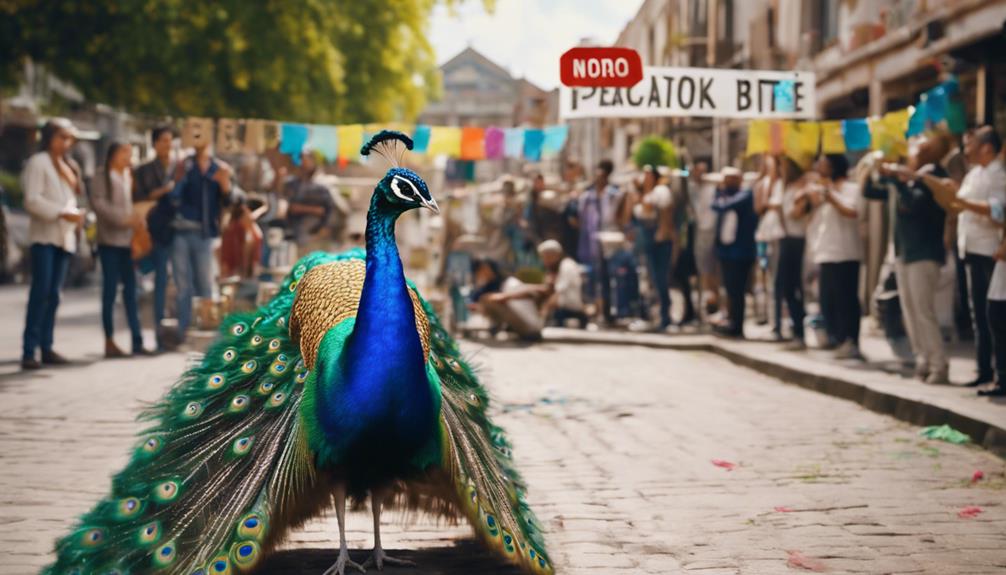If you come across a peacock, be aware that their territorial nature can lead to aggression and potential danger due to their sharp beaks and claws. Stay cautious and give them space to prevent confrontations, especially during mating season when they can be more aggressive. Remember to watch for warning signs like loud calls and aggressive behaviors. Understanding these aspects can help you stay safe around peacocks.
Territorial Behavior
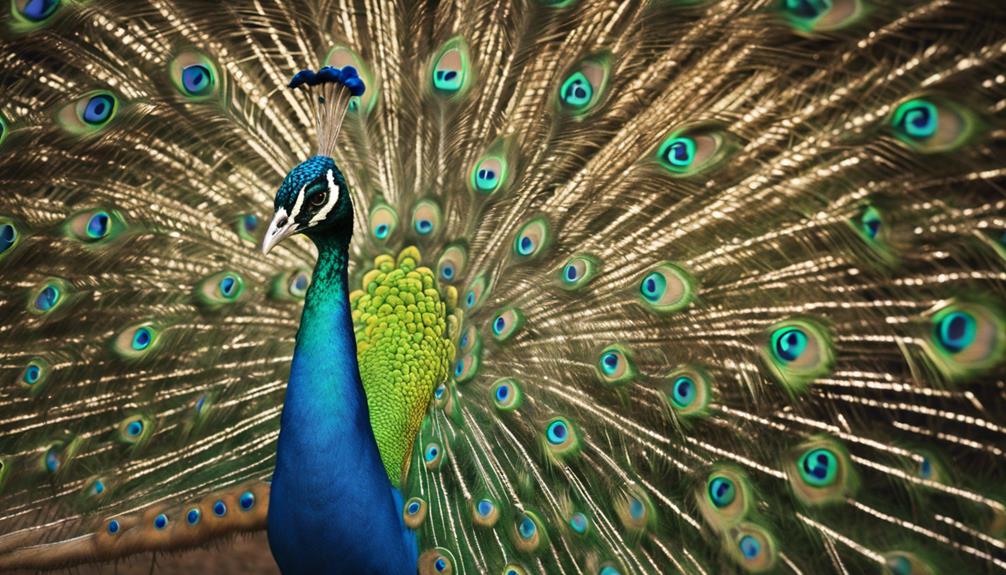
When encountering peacocks, be cautious of their territorial behavior, as they can be aggressive and potentially dangerous due to their strong instinct to protect their territory. These striking birds take their territorial boundaries seriously, and any perceived threat can trigger defensive reactions. It’s crucial to give them space and avoid encroaching on their perceived territory to prevent confrontations. Peacocks may exhibit warning signs like loud calls, fanned tail feathers, and even charging behaviors when they feel threatened.
To stay safe around peacocks, observe their body language for signs of agitation or aggression. If you notice them becoming tense or vocalizing loudly, it’s paramount to slowly back away and give them room to calm down. Remember that peacocks, especially during mating season, can be more territorial and prone to defensive behaviors. By respecting their space and boundaries, you can minimize the risk of potential attacks and enjoy observing these magnificent birds from a safe distance.
Sharp Beaks and Claws
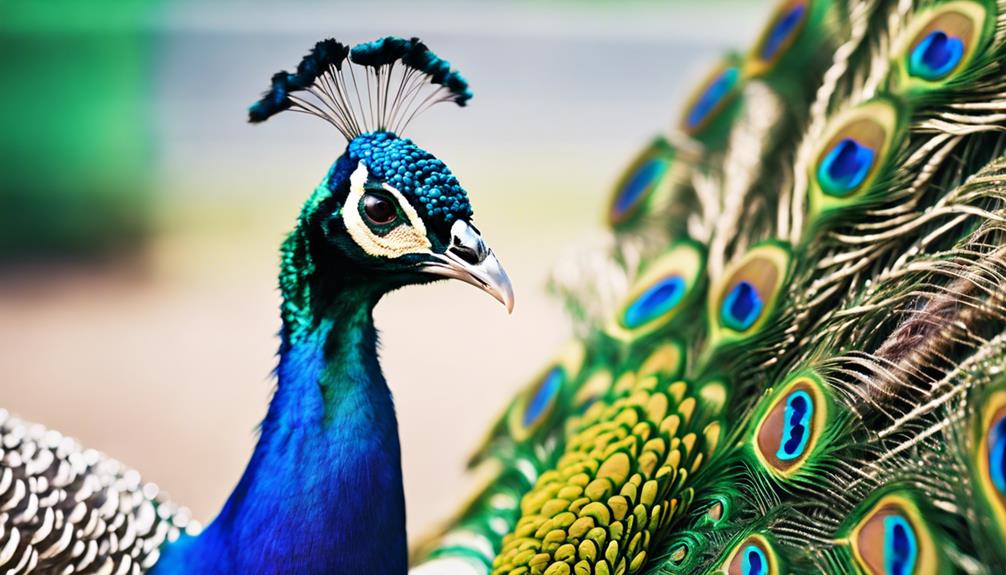
Watch out for peacocks’ sharp beaks and claws, as they can pose a significant threat due to their territorial nature and defensive instincts. These striking birds use their sharp beaks and claws not only for self-defense but also to establish dominance and protect their territory. When feeling threatened or provoked, peacocks may lash out with their sharp beaks and claws, causing painful injuries to those who come too close.
Peacocks can become particularly aggressive during mating season, making it important to exercise caution when around them. Their sharp beaks can easily pierce through skin, and their claws are strong enough to cause deep scratches. It’s important to respect their space and avoid actions that could be interpreted as threatening to prevent potential harm.
To stay safe around peacocks, maintain a safe distance, avoid sudden movements, and refrain from challenging or provoking them. By being mindful of their sharp beaks and claws, you can appreciate these magnificent birds from a safe distance while minimizing the risk of encountering their defensive side.
Fatal Attacks on Humans
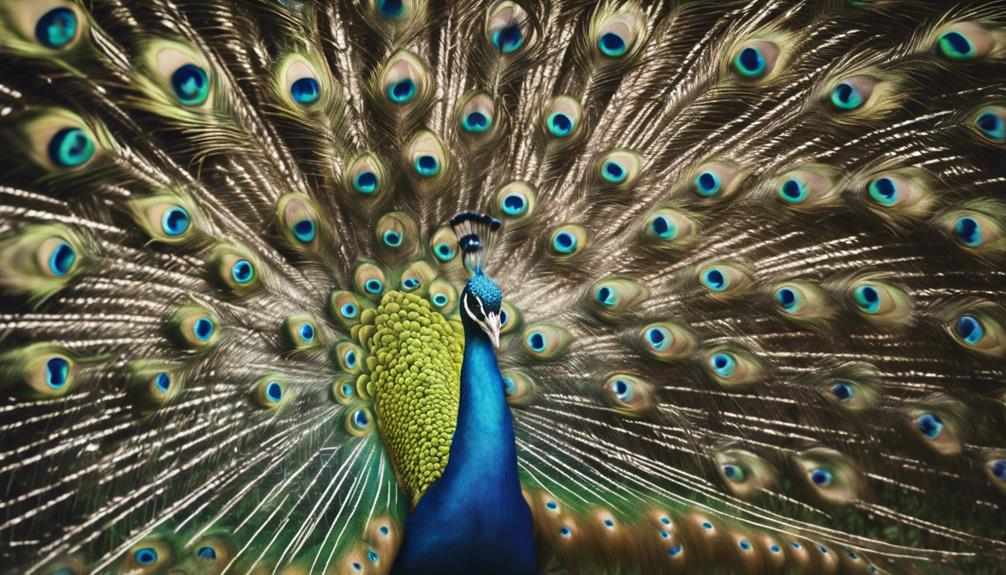
Peacocks have been known to cause fatalities through their aggressive behavior and sharp beaks and claws. While it may be surprising, these beautiful birds can pose a serious threat to humans under certain circumstances. Fatal attacks by peacocks have been documented, especially during mating season when they’re more territorial and protective.
Their sharp beaks and claws, typically used for self-defense and mating rituals, can cause severe injuries if provoked. Understanding that peacocks, despite their graceful appearance, have the potential to exhibit aggressive behavior when they feel threatened or challenged. Hence, exercising caution and respecting their space to prevent any unfortunate incidents is important.
Aggressive Body Language
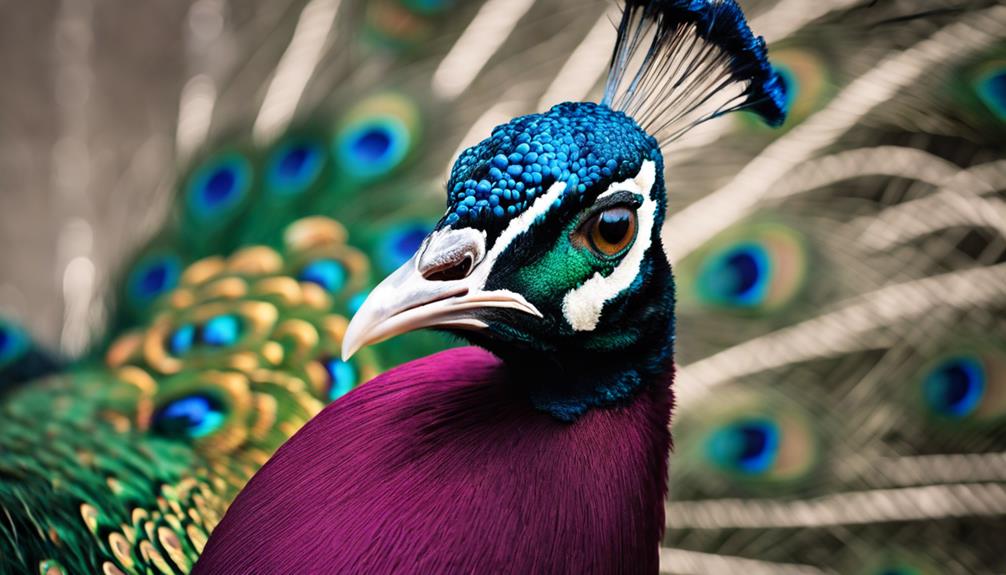
To understand the potential danger posed by peacocks, it’s important to recognize their subtle yet significant cues of aggressive body language. When encountering a peacock displaying signs of aggression, be cautious and avoid provoking them further.
Peacocks may exhibit aggressive behavior by puffing up their feathers, lowering their wings, and emitting loud, high-pitched calls. These body language cues signal that the peacock feels threatened or is preparing to defend its territory. Additionally, peacocks may make direct eye contact, which can be perceived as a challenge. It’s essential to give them space and respect their boundaries to prevent potential harm.
Understanding and respecting their body language can help you avoid dangerous encounters and promote peaceful coexistence with these majestic birds. Stay alert and observant to guarantee your safety and the well-being of the peacocks in their natural habitat.
Mating Ritual Disturbance
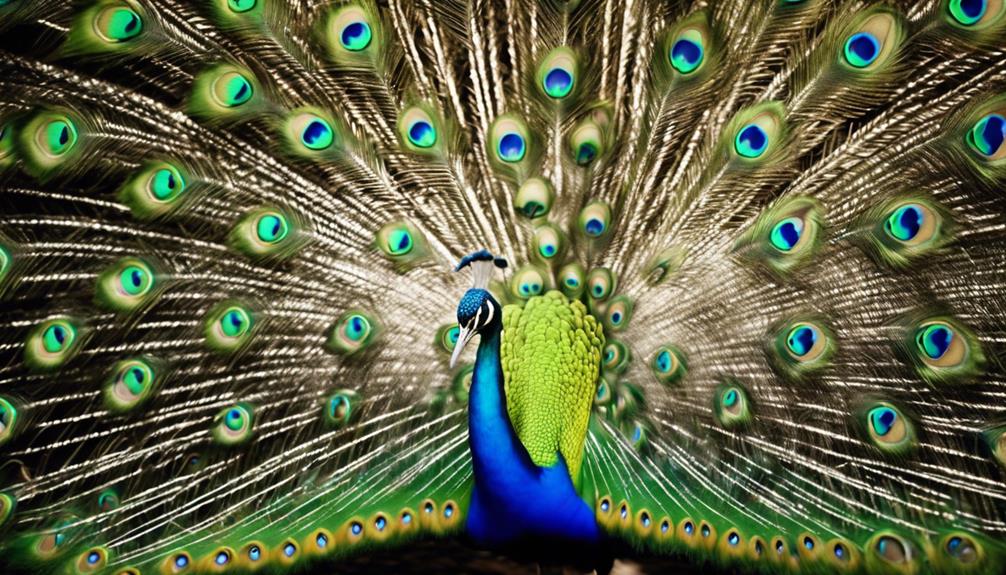
During mating season, it’s important to be mindful of how your actions may impact the peacocks’ natural rituals and behaviors. Disturbing peacocks during their mating rituals can lead to unintended consequences. These birds take their courtship displays seriously, and any interference can disrupt their delicate dance. Approaching too closely or causing loud noises may startle them, causing stress and potentially leading to defensive behavior. Peacocks can become territorial during this time, and any perceived threat to their courting process may trigger aggression.
To avoid disturbances during mating season, it’s best to observe these majestic birds from a respectful distance. Enjoy their vibrant displays from afar without intruding on their space. By being considerate of their natural behaviors, you can help maintain a harmonious environment for both the peacocks and yourself. Remember, patience and respect for wildlife are key when encountering peacocks during their mating rituals.
Misconception of Friendliness
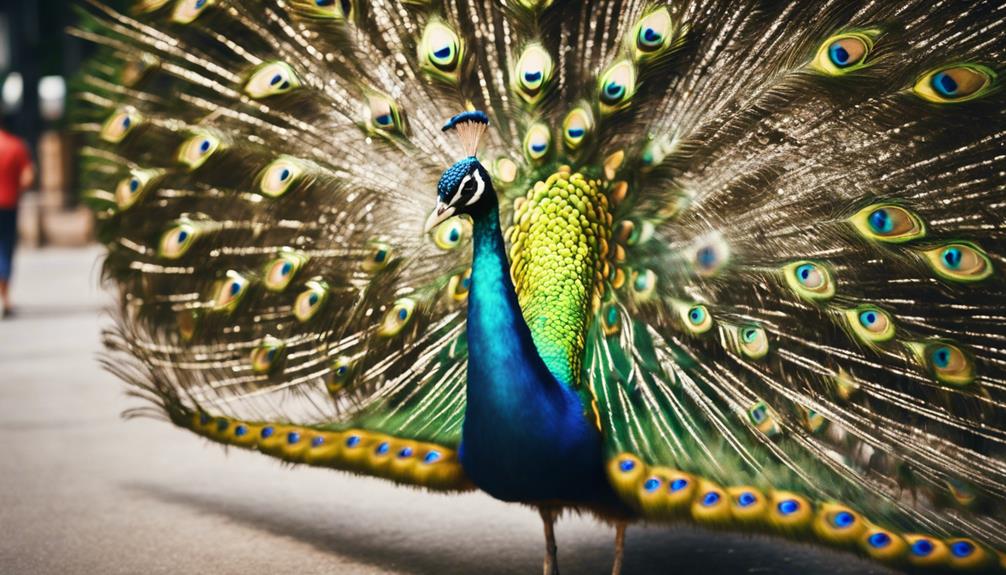
Observing peacocks from a vital distance is essential to dispel the misconception of their friendliness, especially during mating season when they can exhibit territorial behaviors. While their vibrant plumage may suggest a docile nature, peacocks are actually quite protective of their territory and can display aggressive tendencies when they feel threatened.
It’s pivotal to remember that these beautiful birds are wild animals with natural instincts that prioritize survival and reproduction. Approaching them too closely or invading their space can trigger defensive reactions, leading to potential confrontations.
Despite their majestic appearance, peacocks aren’t pets and should be admired from afar to guarantee both their well-being and your safety. By maintaining a safe distance and respecting their boundaries, you can appreciate the beauty of peacocks without underestimating their potential for aggression.
Cautionary Measures
Maintain a safe distance from peacocks to prevent potential confrontations due to their territorial and protective nature. When encountering peacocks, be mindful of their behavior and body language. Avoid getting too close, especially during mating season when they can be more important.
Respect their space and try not to startle or provoke them. If you notice signs of agitation, such as raised feathers or hissing sounds, slowly back away to de-escalate the situation. It’s essential to keep children and pets away from peacocks to guarantee their safety.
In case of an unexpected encounter, remain calm and avoid sudden movements that might trigger a defensive response. By being cautious and respectful around peacocks, you can reduce the risk of potential harm and enjoy observing these majestic birds from a safe distance. Remember, prevention is key when it comes to interacting with wildlife, including beautiful yet potentially dangerous creatures like peacocks.

Erzsebet Frey (Eli Frey) is an ecologist and online entrepreneur with a Master of Science in Ecology from the University of Belgrade. Originally from Serbia, she has lived in Sri Lanka since 2017. Eli has worked internationally in countries like Oman, Brazil, Germany, and Sri Lanka. In 2018, she expanded into SEO and blogging, completing courses from UC Davis and Edinburgh. Eli has founded multiple websites focused on biology, ecology, environmental science, sustainable and simple living, and outdoor activities. She enjoys creating nature and simple living videos on YouTube and participates in speleology, diving, and hiking.
🌿 Explore the Wild Side!
Discover eBooks, guides, templates and stylish wildlife-themed T-shirts, notebooks, scrunchies, bandanas, and tote bags. Perfect for nature lovers and wildlife enthusiasts!
Visit My Shop →
